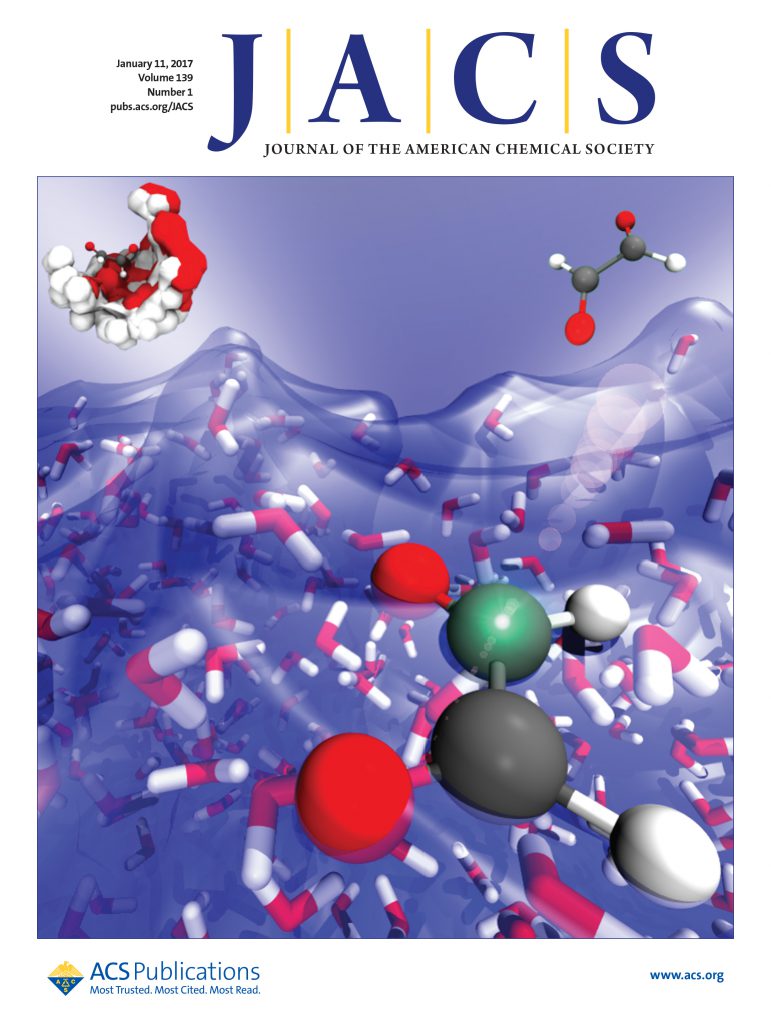通过杂芳基自由基中间体的协同光酶抗烯烃马尔可夫尼科夫氢芳基化
IF 14.4
1区 化学
Q1 CHEMISTRY, MULTIDISCIPLINARY
引用次数: 0
摘要
杂芳烃烷基化反应是合成具有生物活性分子不可缺少的反应。杂芳基卤化物对烯烃进行反马尔可夫尼科夫氢芳化反应,使产物成为单一区域异构体;然而,催化变体在控制这些反应的立体化学结果方面是无效的。在这里,我们报道了利用依赖黄素的烯还原酶和钌光氧化还原催化剂进行烯烃氢芳基化的协同光酶反应。酶同源物的鉴定,提供了超过80%的产率,高达99:1 er。这种方法对苯乙烯和未活化的烯烃都有效,突出了这种方法的通用性。产率最高的体系涉及羧基化光催化剂,对酶的亲和力增加。这项工作扩展了自由基中间体的类型,酶可以用于立体选择性分子间偶联反应。本文章由计算机程序翻译,如有差异,请以英文原文为准。

Synergistic Photoenzymatic Anti-Markovnikov Hydroarylation of Olefins via Heteroaryl Radical Intermediates
Heteroaromatic alkylations are indispensable reactions for synthesizing biologically active molecules. The anti-Markovnikov hydroarylation of olefins using heteroaryl halides furnishes the product as a single regioisomer; however, catalytic variants are ineffective at controlling the stereochemical outcome of these reactions. Here, we report a synergistic photoenzymatic hydroarylation of olefins using flavin-dependent “ene”-reductases with ruthenium photoredox catalysts. Enzyme homologues were identified, which provide access to both product enantiomers in greater than 80% yield with up to 99:1 er. This method is effective for styrenyl- and unactivated alkenes, highlighting the generality of this approach. The highest yielding system involves a carboxylated photocatalyst with increased affinity for the enzyme. This work expands the types of radical intermediates that enzymes can use for stereoselective intermolecular coupling reactions.
求助全文
通过发布文献求助,成功后即可免费获取论文全文。
去求助
来源期刊
CiteScore
24.40
自引率
6.00%
发文量
2398
审稿时长
1.6 months
期刊介绍:
The flagship journal of the American Chemical Society, known as the Journal of the American Chemical Society (JACS), has been a prestigious publication since its establishment in 1879. It holds a preeminent position in the field of chemistry and related interdisciplinary sciences. JACS is committed to disseminating cutting-edge research papers, covering a wide range of topics, and encompasses approximately 19,000 pages of Articles, Communications, and Perspectives annually. With a weekly publication frequency, JACS plays a vital role in advancing the field of chemistry by providing essential research.

 求助内容:
求助内容: 应助结果提醒方式:
应助结果提醒方式:


